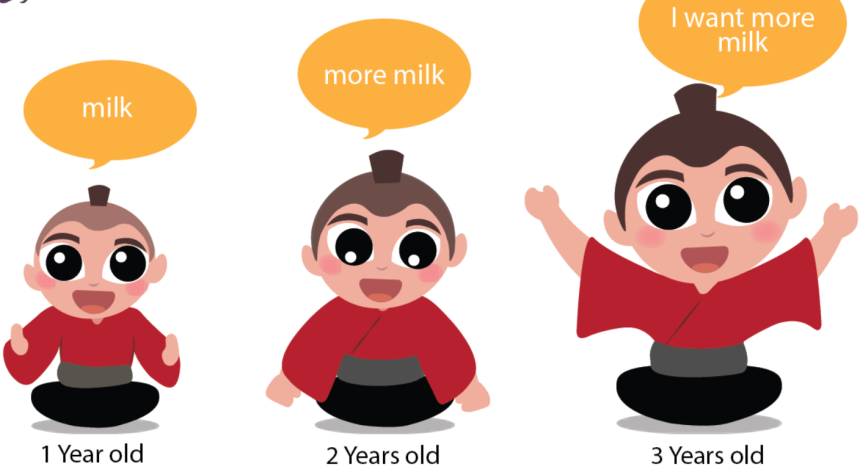Introduction
Speech delays in children can be a source of concern for many parents. Understanding whether your child’s late talking is a language difference or disorder can be complex. This article aims to demystify the causes and signs of speech delay, providing you with the knowledge and resources to address these developmental issues effectively.
Defining Speech Delay in Children
Speech delay in children is when a child develops language skills later than typical age milestones. It’s crucial to distinguish it from a language difference or disorder for accurate diagnosis and intervention.
Understanding the Causes of Speech Delay
Understanding the causes of speech delay is crucial as it helps to identify possible interventions. These causes may be as simple as a child not being exposed to enough language in the home environment. On the other hand, it could point to a more significant underlying health condition, such as learning disorders, hearing loss, physical abnormalities, and developmental disorders. Sometimes, it might also be tied to social issues such as anxiety or environmental factors like neglect or abuse. Understanding these causes helps parents and caregivers seek appropriate interventions for their children’s language differences or disorders.
Learning Disorders
Learning disorders can also contribute to a child’s speech delay. Conditions like dyslexia or ADHD can impact the child’s ability to understand and use language, causing a difference or disorder in speech development. These complexities may pose challenges in verbal expression and communication.
Hearing Loss
Children with hearing loss often experience a language difference or disorder because they miss out on crucial auditory experiences. Not hearing various sounds, intonations, or volumes can trigger a speech delay. Therefore, it’s vital to check hearing abilities when assessing speech development.
Physical Abnormalities
Physical abnormalities also play a role in speech delay. Floppy or stiff muscles around the lips, tongue, jaw, or vocal cords can affect the ability to form sounds. Moreover, physical issues like cleft lip or palate lead to difficulty in producing certain sounds effectively.
Developmental Disorders
Developmental disorders, such as Autism Spectrum Disorder, can also lead to speech delays in children. These are usually characterized by trouble with social interactions and communication, including issues with both verbal and non-verbal cues. It’s important to distinguish between language differences and disorder in this context.
Recognizing the Signs of Speech Delay in Children
Recognizing the signs of a speech delay in your child can be the first step toward addressing the issue. Watch for indications such as limited vocabulary or inability to form sentences appropriate for their age. A child may have difficulty making certain sounds or not talking. They may skip the normal babbling phase of infant speech and not point at or name objects. As children get older, look for stuttering or other non-fluent speech. These signs alone do not confirm a language difference or disorder, but if combined with other symptoms, they may indicate a need for evaluation.
Delayed Vocabulary Development
Delayed vocabulary development is a crucial sign of speech delay. Children may struggle to learn, use or understand new words, indicating a language difference or disorder. They may rely heavily on non-verbal communication, often leading to frustration and emotional distress.
Issues in Social Interaction
Children with speech delays often struggle with social interaction. They may show difficulty understanding others, responding appropriately, or maintaining a conversation. This can lead to frustration and isolation, exacerbating the language difference or disorder. Early intervention can help address these issues.
Non-fluent Speech
In some instances of speech delay, children may exhibit non-fluent speech. This could be marked by frequent disfluencies, stuttering, or difficulty organizing their thoughts verbally. Non-fluent speech is more than just stumbling over words; it often signifies a deeper language development issue.
Concerns in Linguistic Comprehension
Children with speech delay might struggle to understand language, be it phrases or simple commands. This issue in linguistic comprehension is critical to spotting a potential language difference or disorder. They may struggle to follow conversations or display difficulty comprehending complex sentences.
How to Address Speech Delay in Children
If you’re concerned about potential speech delay in your child, it’s crucial to address it early. The first step involves having a thorough evaluation done by a speech-language pathologist. They’ll guide you on specific interventions that may help, like speech therapy. Including activities promoting language development in your child’s daily routine could also be beneficial. Involving the entire family in supporting the child is essential. Children contract speech at different rates, so it might be a language difference, not a disorder. Always have an open conversation with a healthcare professional to better understand your child’s situation.
Visiting a Speech-Language Pathologist
Seeking help from a speech-language pathologist can be beneficial in handling a language difference or disorder. Trained to diagnose and treat speech delays, they possess the necessary skills to devise personalized strategies to enhance your child’s speech development.
Use of Speech Therapy
Speech therapy can be beneficial in addressing a language difference or disorder, providing your child an outlet to develop their communication skills. This therapy includes strategies tailored to each child’s needs, improving speech-related issues like pronunciation, fluency, and comprehension.
Parental and Family Support
Proactive family support can significantly help a child cope with language differences or disorders. Encouragement, patience, and a nurturing environment boost their confidence to communicate better. Moreover, parents should work closely with professionals to develop effective strategies customized to their child’s needs.
Conclusion
In conclusion, identifying whether a child’s speech delay is a difference or disorder is essential. Detecting the signs early promises better outcomes. Allowing for professional intervention, such as speech therapy, backed up by family support, is a promising way to combat this issue.














